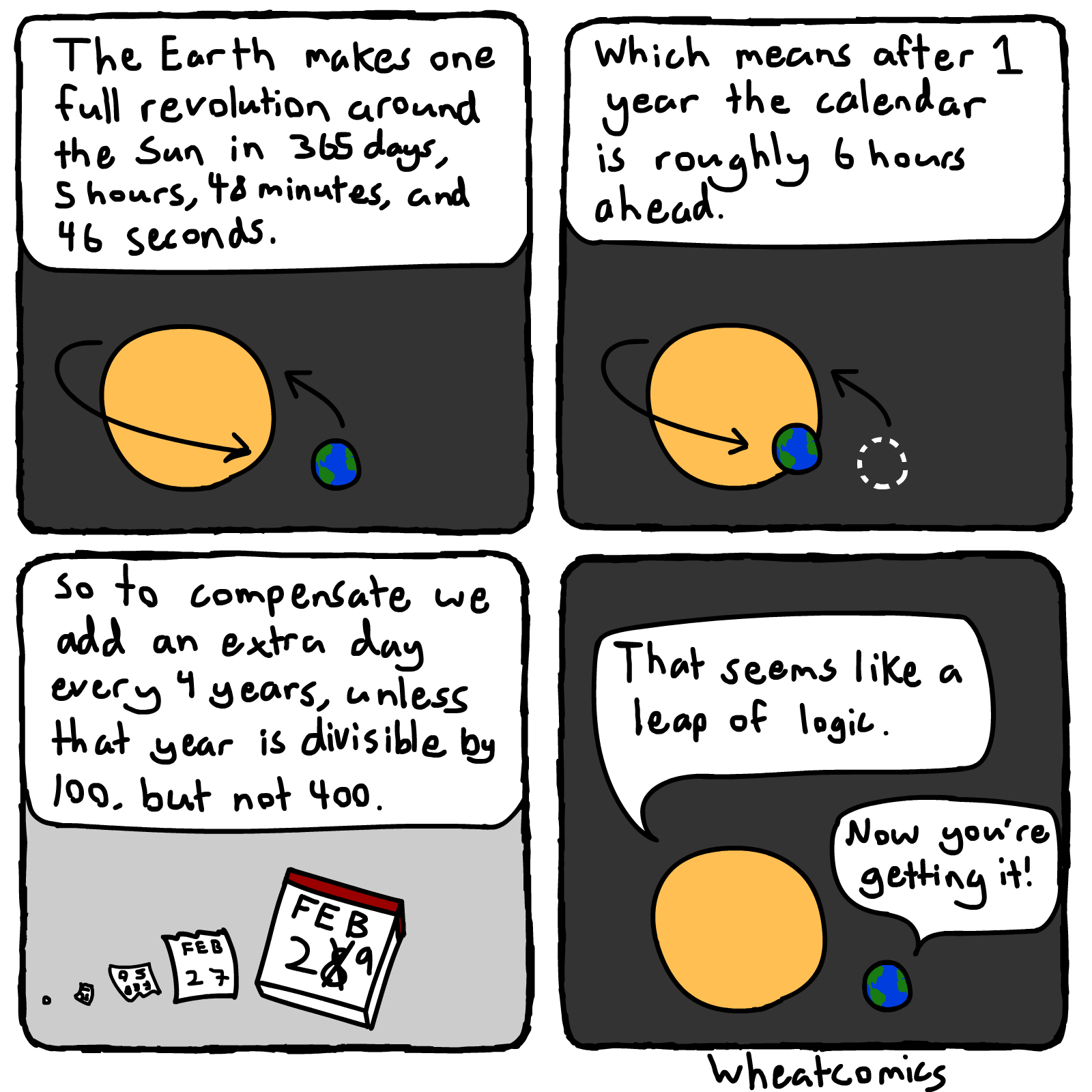
Another tradition that dates back many centuries holds that during a leap year or on a leap day, a woman is allowed to propose marriage to a man instead of waiting for a man to offer a proposal. In Greece, some believe it is bad luck to get married in a leap year or on a leap day. There are customs and traditions associated with leap years and days. This is why the years 16 were leap years but 1700, 1800, and 1900 were not and why 2400 will be a leap year but 2100, 2200, and 2300 will not. The Gregorian calendar reformed the concept in 1582 by eliminating leap years in century years that weren’t exactly divisible by 400. Was there a leap year 1964 The year 1964 is a leap year, with 366 days in. What were the leap years in the 90s Any year that is evenly divisible by 4 is a leap year: for example, 1988, 1992, and 1996 are leap years.

In 46 BCE the Julian calendar introduced a leap day every four years, but a problem with the measurement that was used led to a mounting discrepancy over the course of several centuries. Circle the years that were leap years: 1900, 1972, 1956, 1946, 1992, 1886, 1420, 1600 4.

The idea of adding time to a calendar via a leap day has been around for millennia- Ptolemy III Euergetes tried, but failed, to implement such a scheme in the 3rd century BCE-and has been refined over time. Other calendars also utilize the concept of a leap year. In the Gregorian calendar, this is done by giving the month of February-usually only 28 days-an extra day, the 29th. Thus, just about every four years (that’s right, not every four years…see the next paragraph to learn why), a leap day is added to account for four extra 0.25 days. Leap days are necessary because an astronomical year-the time it takes for Earth to complete its orbit around the Sun-is about 365.25 days, while a calendar year is 365 days. A leap day occurs in a leap year, which is a year with an inserted period of time. SpaceNext50 Britannica presents SpaceNext50, From the race to the Moon to space stewardship, we explore a wide range of subjects that feed our curiosity about space!įor adherents of the Gregorian calendar, Monday, February 29, 2016, is Leap Day.Learn about the major environmental problems facing our planet and what can be done about them! Saving Earth Britannica Presents Earth’s To-Do List for the 21st Century.Britannica Beyond We’ve created a new place where questions are at the center of learning.100 Women Britannica celebrates the centennial of the Nineteenth Amendment, highlighting suffragists and history-making politicians.
When was the last leap year how to#
COVID-19 Portal While this global health crisis continues to evolve, it can be useful to look to past pandemics to better understand how to respond today.



 0 kommentar(er)
0 kommentar(er)
